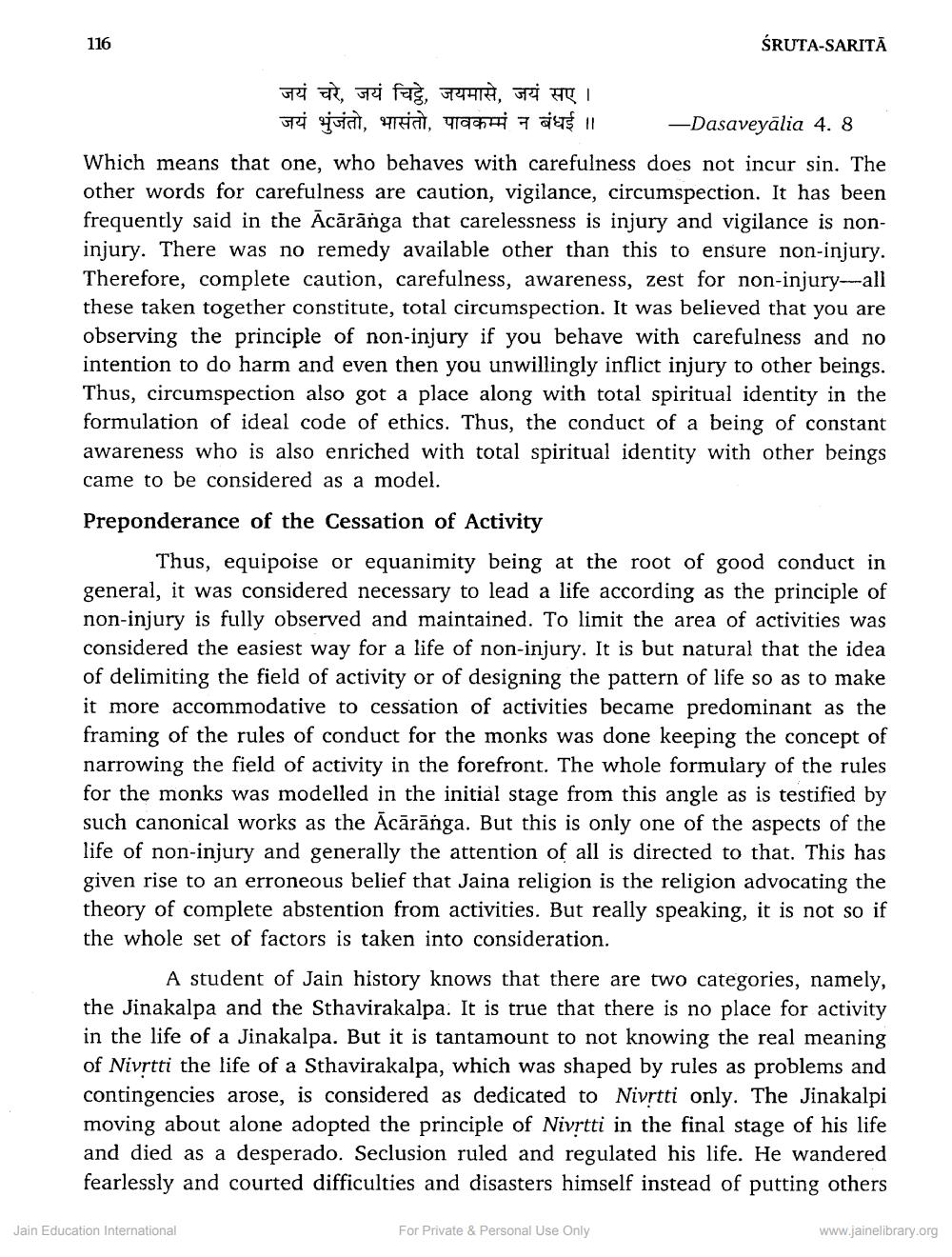________________
116
ŚRUTA-SARITĀ
जयं चरे, जयं चिट्ठे, जयमासे, जयं सए । जयं भुंजतो, भासंतो, पावकम्मं न बंधई ।।
-Dasaveyālia 4.8
Which means that one, who behaves with carefulness does not incur sin. The other words for carefulness are caution, vigilance, circumspection. It has been frequently said in the Ācārānga that carelessness is injury and vigilance is non injury. There was no remedy available other than this to ensure non-injury. Therefore, complete caution, carefulness, awareness, zest for non-injury-all these taken together constitute, total circumspection. It was believed that you are observing the principle of non-injury if you behave with carefulness and no intention to do harm and even then you unwillingly inflict injury to other beings. Thus, circumspection also got a place along with total spiritual identity in the formulation of ideal code of ethics. Thus, the conduct of a being of constant awareness who is also enriched with total spiritual identity with other beings came to be considered as a model.
Preponderance of the Cessation of Activity
Thus, equipoise or equanimity being at the root of good conduct in general, it was considered necessary to lead a life according as the principle of non-injury is fully observed and maintained. To limit the area of activities was considered the easiest way for a life of non-injury. It is but natural that the idea of delimiting the field of activity or of designing the pattern of life so as to make it more accommodative to cessation of activities became predomi framing of the rules of conduct for the monks was done keeping the concept of narrowing the field of activity in the forefront. The whole formulary of the rules for the monks was modelled in the initial stage from this angle as is testified by such canonical works as the Acārānga. But this is only one of the aspects of the life of non-injury and generally the attention of all is directed to that. This has given rise to an erroneous belief that Jaina religion is the religion advocating the theory of complete abstention from activities. But really speaking, it is not so if the whole set of factors is taken into consideration.
A student of Jain history knows that there are two categories, namely, the Jinakalpa and the Sthavirakalpa. It is true that there is no place for activity in the life of a Jinakalpa. But it is tantamount to not knowing the real meaning of Nivetti the life of a Sthavirakalpa, which was shaped by rules as problems and contingencies arose, is considered as dedicated to Nivetti only. The Jinakalpi moving about alone adopted the principle of Nivrtti in the final stage of his life and died as a desperado. Seclusion ruled and regulated his life. He wandered fearlessly and courted difficulties and disasters himself instead of putting others
Jain Education International
For Private & Personal Use Only
www.jainelibrary.org




